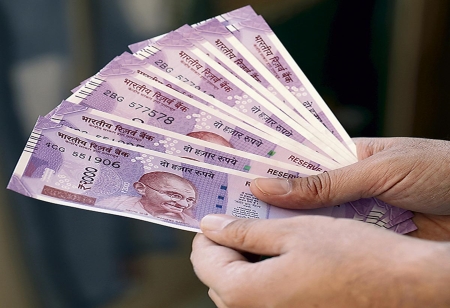
Indian Government To Borrow INR 16 Trillion for Budget

 According to a poll of economists, the Indian government will borrow a record 16 trillion rupees ($198 billion) in the fiscal year ending March 2024, with infrastructure spending and fiscal discipline being the top budget priorities.
According to a poll of economists, the Indian government will borrow a record 16 trillion rupees ($198 billion) in the fiscal year ending March 2024, with infrastructure spending and fiscal discipline being the top budget priorities.
In the last four years, the federal government's gross indebtedness has more than doubled as Prime Minister Narendra Modi's government has spent heavily to protect the economy from the effects of the COVID-19 pandemic and to provide relief to the poor.
The budget presented on February 1 will be the last full-fledged budget before national elections in 2024 and elections in several large populous states that will be key litmus tests for the ruling Bharatiya Janata Party (BJP).
However, a drop in tax revenue and expected slowing economic growth in the next fiscal year will limit the government's ability to reduce borrowing in the short term.
According to the median forecast of 43 economists, gross borrowing is expected to reach 16.0 trillion rupees in the coming fiscal year, up from 14.2 trillion rupees in 2022/23.
Predictions ranged from 14.8 trillion to 17.2 trillion rupees. Even if it is at the lower end of the range, gross borrowing in 2023/2024 would easily be the highest on record. The country's gross annual borrowing was only 5.92 trillion rupees when Modi's BJP came to power in 2014.
"The key reason gross borrowing is going to be still quite high is the repayment burden," said Dhiraj Nim, economist at ANZ. "The government borrowed a lot in the last few years to have funds for the pandemic, which means the repayment burden will now be quite elevated for several years."
Nim estimated 2023/24 repayments at around 4.4 trillion rupees.
While economists in a separate poll predicted that the government would reduce the budget deficit to 6.0 percent of GDP in 2023/24, this would still be well above the average of 4% to 5% seen since the 1970s and far from the target of 4.5 percent by 2025/26.
The deficit has more than doubled since the pandemic. Rising interest rates have made repaying borrowed funds more difficult.
The International Monetary Fund stated last month that India needed a more ambitious fiscal consolidation plan to ensure debt sustainability in the medium term. The government claims that its current plan is adequate for the task.
The federal and state governments are indebted to the tune of 83% of annual GDP, a figure higher than that of many other emerging economies. The country's sovereign credit rating is barely above junk.
"With the fiscal deficit and public debt at historical highs, India has to delicately balance fiscal discipline vis-a-vis the need to support growth. The government has to do the heavy lifting on capex," said Sujit Kumar, economist at Union Bank of India.
Kumar added that infrastructure investment "will be an obvious preference" for spending, but a slowing economy will reduce tax collection, limiting the government's ability to maintain capital expenditure at the rate it has since 2020/21.
According to the poll, the Indian government's capital expenditure in the coming fiscal year will reach a record 8.85 trillion rupees, or around 2.95 percent of GDP.
However, growth in such spending is expected to slow to less than half of what it has been in the previous three years.
India requires significant government funding to overhaul its infrastructure in order to compete with China as the world's factory.
When asked what the two most pressing budget priorities should be, only half of the respondents (18 of 36) named fiscal discipline and infrastructure investment. The remaining 18 proposed job creation, education, healthcare, or rural development.
According to the poll, India's government will reduce food and fertiliser subsidies to 3.7 trillion rupees, which is more than 25% less than the level of around 5 trillion rupees budgeted for 2022/23.